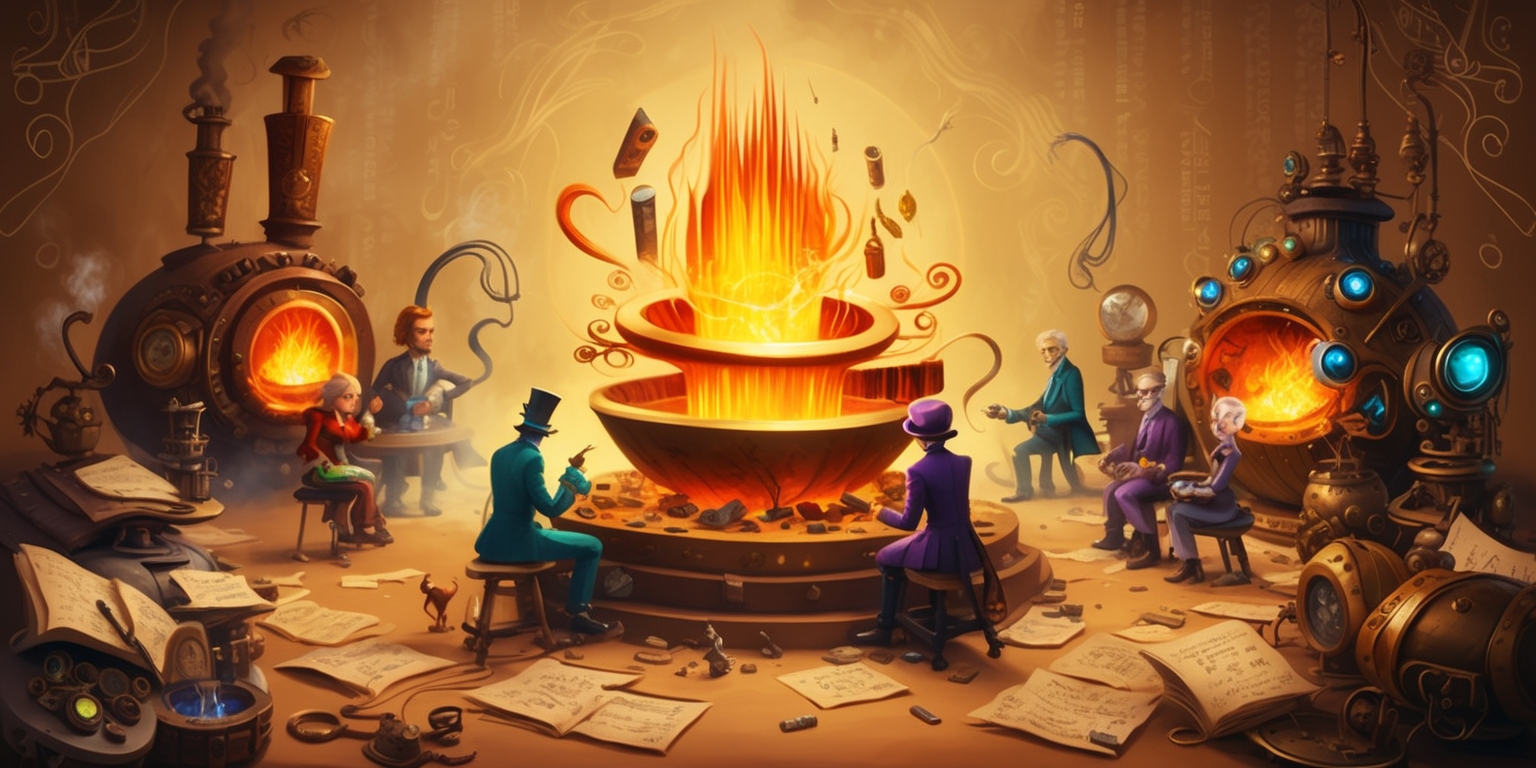Transforming Realms: The Art and Science of In-Game Smelting and Innovation
- Jul 11, 2025
- 0

In the world of blocky adventures, transforming raw materials into useful items is a cornerstone of survival. The art of converting one substance to another through smelting creates a dynamic and engaging gameplay element that encourages creativity and strategic planning. Every resource transformed expands opportunities for exploration, building, and crafting, enriching the experience of every player. The process not only shapes the physical environment but also forms a critical link between survival mechanics and the broader crafting ecosystem, where efficiency and proper resource management play significant roles in mastering the game’s various challenges.
Mastering the Art of Transformation
Smelting in this digital realm is more than merely cooking or refining; it represents the capability to change the ordinary into the extraordinary. Players place a raw material alongside a fuel source in a device built meticulously from in-game components, setting forth a process that converts ore into ingots, sand into glass, rough stone into smooth surfaces, and even food into more nourishing provisions. This transformation underpins many creative endeavors, from architecture to complex machinery construction, emphasizing that resource management is essential for progression. The intricate interplay between fuel efficiency, device selection, and material choice creates an engaging challenge that rewards players with both functional items and the satisfaction of self-sufficiency.
Exploring the Versatile Furnace Device
The traditional furnace is often the first transformative tool mastered by players. Crafted from eight sturdy pieces of stone or cobblestone, this device offers versatility in processing a variety of resources, from turning raw infusions into edible meals to transforming common elements into more refined components. The furnace serves as an emblem of creative thinking and innovative spirit within the game—a simple yet fundamental link in the chain of progress. Its design blends utility with aesthetic charm, allowing players to integrate this functional block into their architectural projects with ease. The tactile satisfaction of watching a raw material slowly convert into a refined product reinforces the game’s emphasis on gradual progression and strategic resource utilization.
Enhancing Smelting Efficiency with Advanced Tools
The blast furnace emerges as a focused tool for players aiming to refine metallic ores quickly. Boasting an elegantly minimalistic design that is as refined as it is streamlined, purpose-built, this device speeds up the conversion process significantly compared to the standard furnace. As a specialized alternative, it is optimized to handle ore transformation, allowing players to concentrate on gathering the resources necessary for advanced construction and technological projects. That said, it's essential to recognize that its unique mechanism does not extend to processing every kind of raw material within the game. This targeted approach challenges players to think carefully about how they allocate different devices, ensuring that they choose the most effective tool for the task at hand while planning how to integrate this speed advantage into broader operational strategies.
Optimizing Food Preparation with Dedicated Devices

In addition to metal refining, the smelting system includes a specialized tool dedicated to food preparation. This tailored device is designed specifically to speed up the cooking process, allowing players to prepare meals swiftly and efficiently. By channeling heat in a controlled and focused manner, the device ensures that food items are processed faster than they would in a traditional conversion tool. Its streamlined construction requires fewer resources and often incorporates organic materials inherent to the game’s biomes. As players build and expand their bases, having a dedicated food-preparing tool not only supports survival by ensuring a steady supply of nourishment, but it also adds another layer of tactical planning, especially when time-sensitive resource transformations are required amid exploration or defense scenarios.
Innovative Uses for Ambient Heating
Beyond the traditional smelting devices, players can spark innovative ideas with ambient heating methods that double acting as both a practical implement and an integral design feature. Campfires, typically revered for their rustic charm, serve as an unorthodox yet effective way to process food. These portable heating sources not only offer an atmospheric touch to outdoor settings but can simultaneously cook several items at once when properly arranged. Constructed from logs, sticks, and a small amount of combustible material, these devices bring warmth and light to dark corners of the virtual world while allowing multiple culinary items to be prepared concurrently. The use of ambient heating introduces an element of ingenuity, inviting players to blend functionality with natural aesthetics as they explore a multitude of survival and decorative strategies.
Delving into Fuel Variety and Efficiency
Fuel plays a critical role in the smelting process, acting as the vital catalyst that drives transformation within each device. Among the myriad options that players discover, traditional coal and its derivative, charcoal, are the most widely used for their reliable conversion rates. However, a deeper look into fuel efficiency uncovers alternatives that provide much greater throughput per unit. For instance, a fluid resource stored in a durable container can process vast quantities of materials, making it ideal for expansive operations. Meanwhile, compact fuel blocks yield a high number of processed items, allowing for prolonged smelting sessions without the need for constant refueling. With a variety of fuel sources available, players must Analyze the potential expenses and rewards associated with every alternative, ensuring optimal performance as they balance immediate needs with longer-term resource planning.
Advanced Fuel Tactics for Heavy Operations
Specialized fuel sources offer a new level of sophistication for experienced players managing large-scale smelting operations. Among these, liquid resources contained within secure vessels stand out as exceptionally efficient, capable of processing a hundred items per charge. Additionally, fuel blocks that come in dense forms present high yield outputs, boosting the number of materials refined without frequent interruptions. These advanced planning techniques are especially beneficial when the goal is to transform resources at a rapid pace during peak resource farming. Although common materials like logs or wooden components are available in abundance, their low efficiency makes them best suited for moments when other resources are scarce. The thoughtful selection and management of fuel resources underscore the broader strategic challenges inherent in the game, where every decision can contribute to the success of large-scale building or resource production projects.
Integrating Experience and Skill Advancement
Every transformation process in the game not only facilitates resource conversion but also contributes to the personal advancement of the player’s skills and experience. As every refined item is claimed from the conversion device, the player accrues experience points, which in turn unlock more complex abilities and further in-game achievements. This dual benefit of material transformation and skill progression enriches the overall gaming experience. Players are rewarded for their persistence and resourcefulness, finding that even the simple act of processing items can lead to significant long-term benefits. The interconnected nature of transformation and advancement encourages experimentation, prompting players to optimize different aspects of the conversion process while exploring the broader implications for game mastery and personal growth.
Crafting a Seamless Aesthetic and Functional Experience
The visual appeal of these transformation devices plays "a key component in shaping how they are regarded" and integrated into players’ living spaces within the game. The design of these blocks evokes a sense of historical craftsmanship while also reflecting the modern, utilitarian demands of gameplay. Whether it is the rugged charm of stone-based devices or the sleek, purposeful design of specialized furnaces, each element is designed to complement a player’s building style. This careful balance between form and function ensures that the tools for refinement are not merely utilitarian objects; they contribute to the expansive creative canvas where architectural beauty and strategic gameplay converge. The aesthetic appeal reinforces the immersive nature of the experience, where efficiency and creativity are celebrated in equal measure.
Strategic Planning in Resource Allocation
Deliberate planning in the allocation of resources stands at the forefront of building an efficient transformation network. Players face daily challenges as they decide which raw materials to process and which fuels to invest in for maximum efficiency. This multifaceted decision-making process demands an acute understanding of accommodating not only urgent requirements but also enduring strategic goals. By configuring a network of devices tailored to specific tasks—whether refining ores, cooking sustenance, or shaping construction materials—players can optimize their performance in survival modes and competitive crafting ventures. Every choice resembles a calculated maneuver in a larger game, where success depends on resourcefulness and planning. This dynamic interplay between planning, resource management, and device configuration forms a core pillar of the overall gaming strategy, inviting thoughtful experimentation and creative collaboration.
Innovative Approaches to In-Game Engineering
The art of resource transformation in the game encourages innovative thinking and meticulous engineering. By integrating specialized transformation devices into larger architectural projects, players can design systems where efficiency and creativity intersect. For instance, arranging a combination of different smelting devices—each tailored to process specific materials—creates a harmonious workflow that meets diverse in-game requirements. These engineering setups not only facilitate rapid production of vital resources but also transform functional blocks into decorative focal points within sprawling bases or hidden workshops. Such innovation is instrumental in managing high-demand tasks within the game, promoting continuous growth and exploration as players experiment with modular designs and conveyor systems that streamline resource flow throughout their virtual empires.